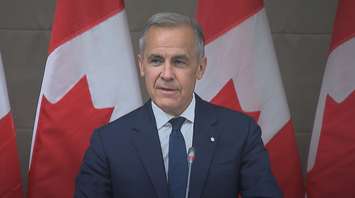The first proposed budget under Prime Minister Mark Carney will target big-ticket investments as Canada's economy continues to face challenges due to the historic rise in tariffs.
Finance Minister François-Philippe Champagne presented the new Liberal government’s first budget Tuesday, saying it will focus on major capital spending to boost the economy in these uncertain times.
"The budget I present today comes at a time of profound change, a time to build," he said. "The world is undergoing a series of fundamental shifts as a speed, scale and scope not seen since the fall of the Berlin Wall. The rules-based international order... that powered Canada's prosperity for decades are being reshaped, threatening our sovereignty, and our values."
Budget 2025 promises capital investments of about $280 billion over five years in four main areas: infrastructure, productivity and competitiveness, defence and security and housing.
Of the four, the housing sector will receive the fewest dollars, at a time that the federal government says the nation is facing a steep housing supply gap.

The deficit for 2025-26 is projected to be $78 billion, and the government plans to decrease that number to $57 billion over five years.
Champagne highlighted Canada's low debt-to-GDP ratio, and the fact that it's the only G7 nation with free-trade agreements with all other G7 nations, saying it was in a strong financial position to make these investments back into the county.
"You can slash the deficit, hope for the best, wait for the uncertainty to unexpectedly disappear and see if the trickle-down ever comes," he said. "That approach, to balance the budget this year, would have to eliminate vital social programs and all of the capital investments needed for Canada's future. We chose a different path."
There is $141 billion more in new spending over the next five years in the budget, but also over $51 billion in cuts and savings.
In order to balance that emphasis on capital spending, the Liberal government said it will reduce operational spending through measures like slashing the federal workforce, and "adopting AI at scale."
"Since 2019, the federal public service population has grown at a rate which is far greater than the Canadian population. We must get the size of our public service back to a sustainable level that is keeping with best practices, but we will do that with fairness and compassion because we appreciate the work of every public servant in this county," said Champagne.
Another major change the Liberals proposed is to continue presenting the federal budget will be presented in the fall, to better align with construction season and support provinces and municipalities.
However, the opposition said it could not support the budget as presented, with Conservative Leader Pierre Poilievre saying he would put forth an amendment.
"It will get rid of the industrial carbon tax, cut the wasteful spending to bring down debt, inflation and taxes. It will open our country up to opportunity by developing our prodigious resources, clear away bureaucracy to build affordable homes," said Poilievre.
The minority Liberals will need two supporters from other parties to get the necessary 172 votes to pass the budget, after Nova Scotia MP Chris d'Entremont crossed the floor on Tuesday.






